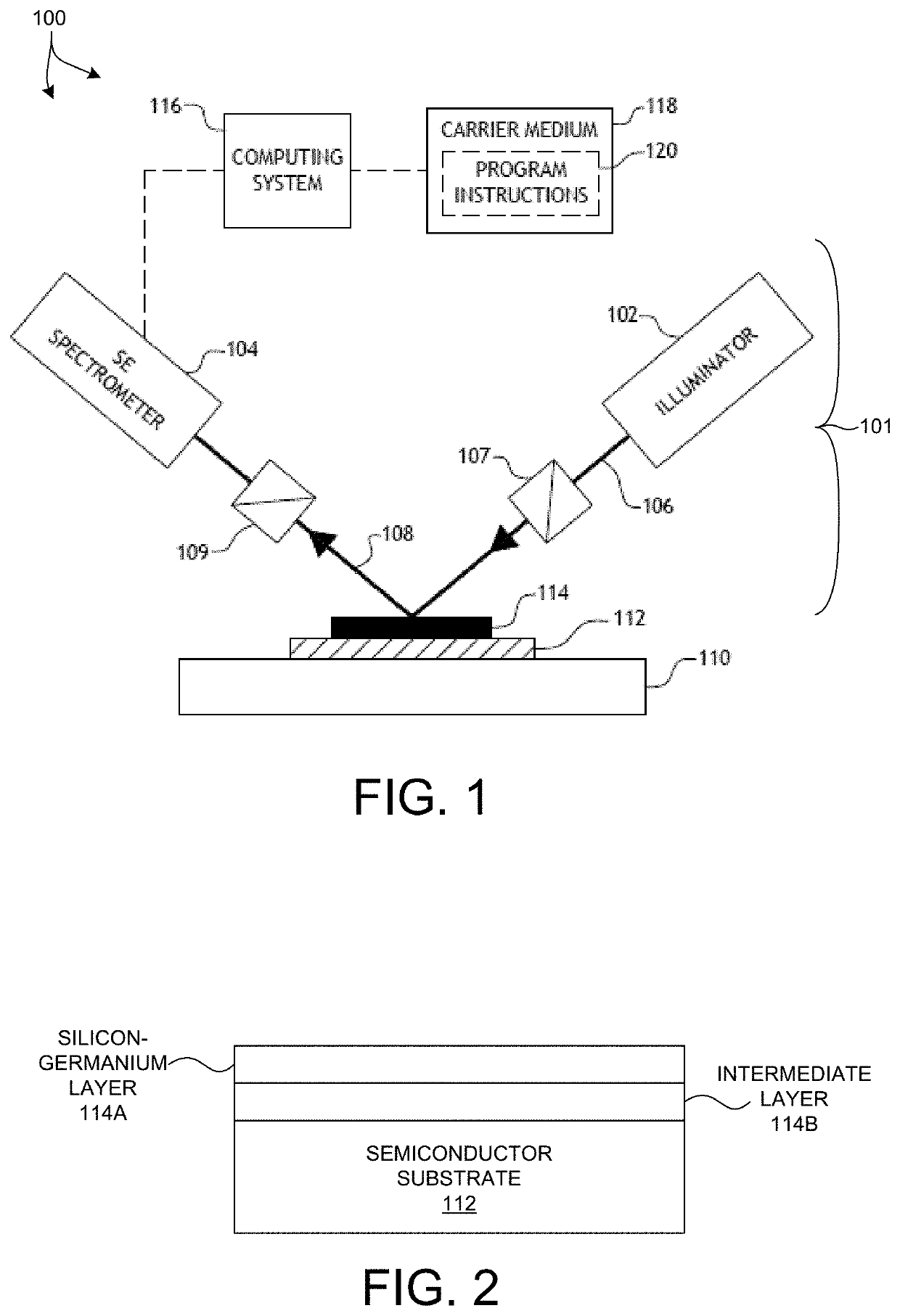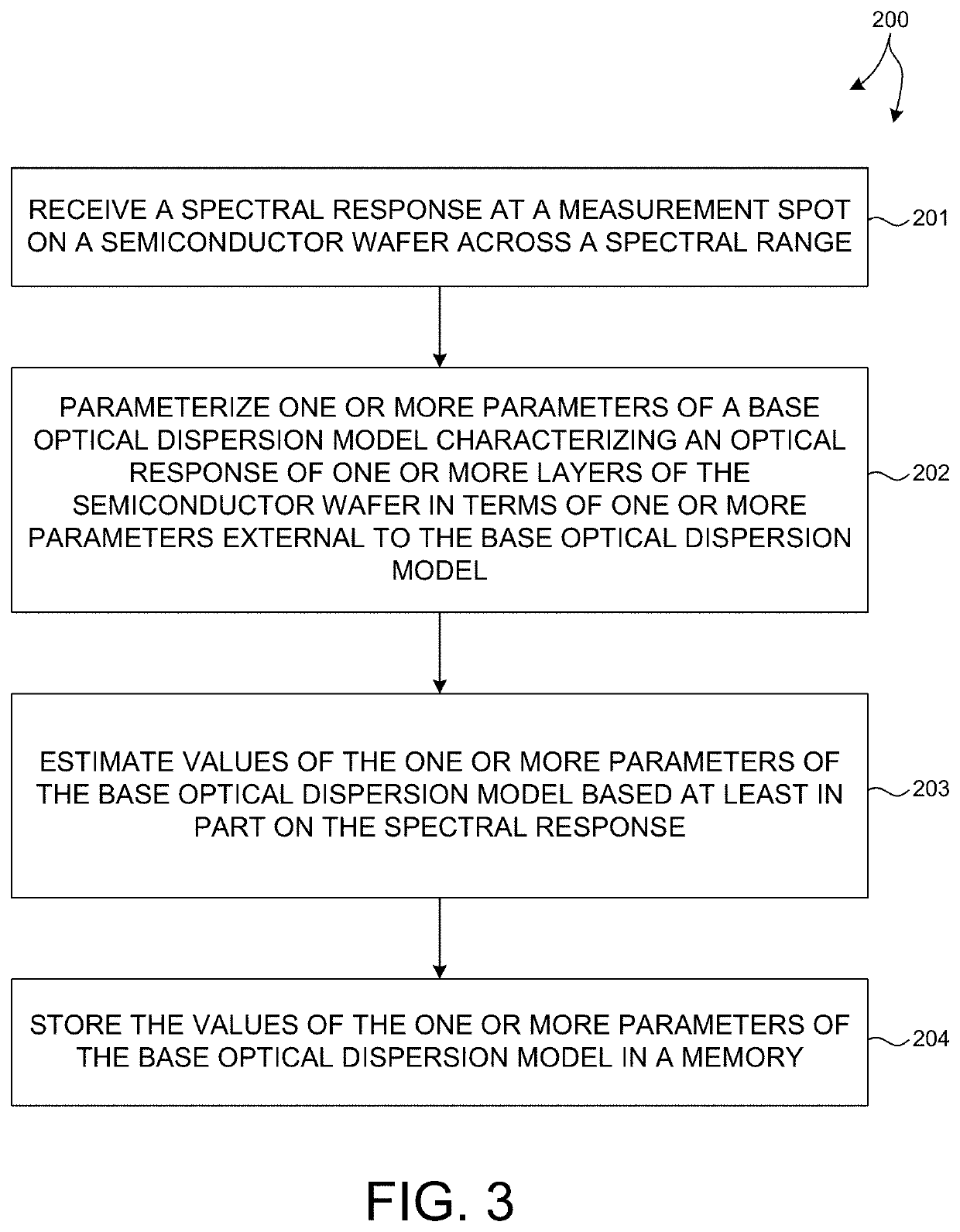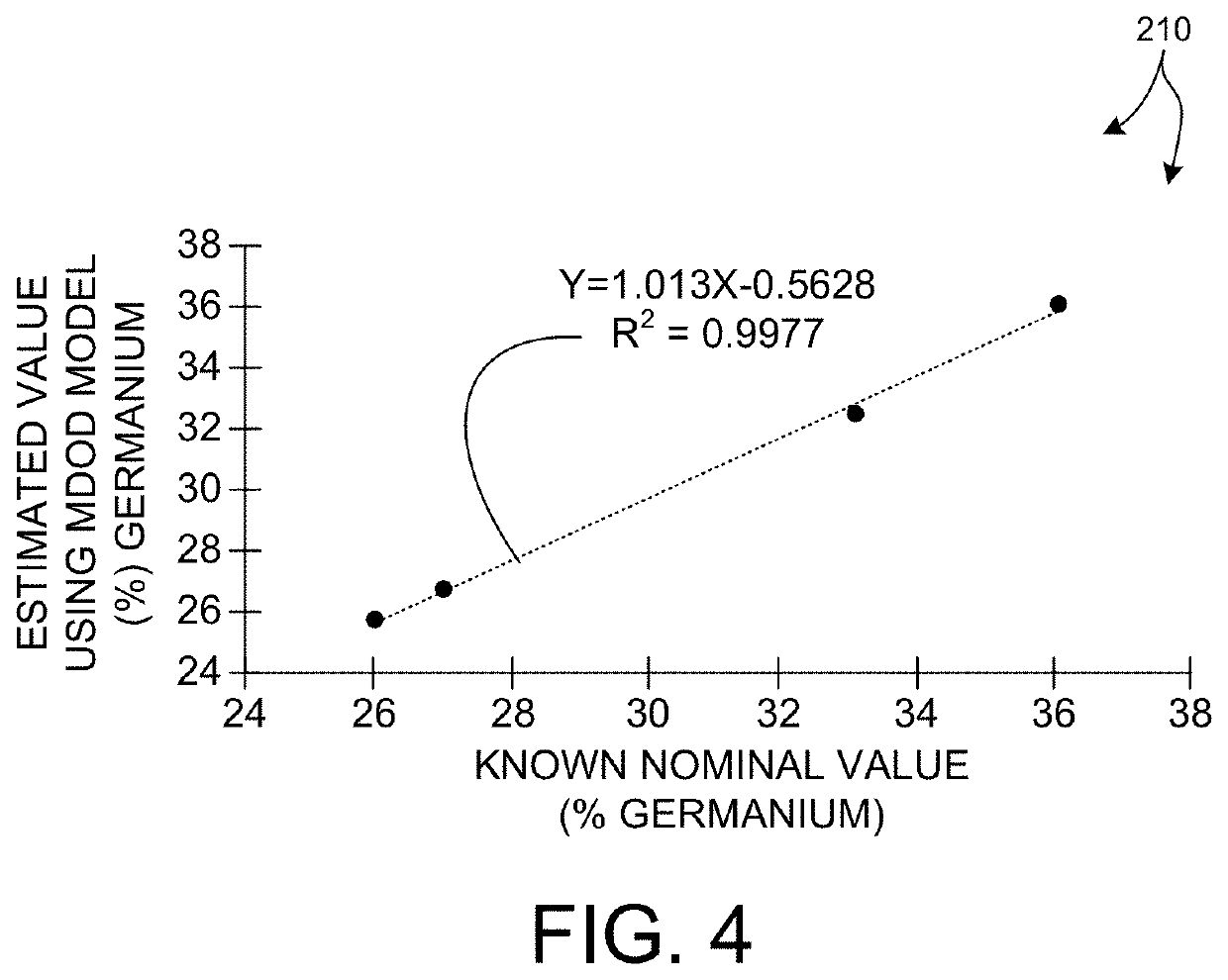Multi-Dimensional Model Of Optical Dispersion
a multi-dimensional model and optical dispersion technology, applied in the field of optical characterization systems, can solve the problems of measurement technology suffering from any of a number of limitations, measurement technology is slow, measurement requires the destruction of samples, etc., and achieves the effect of robustness and high throughput tracking
- Summary
- Abstract
- Description
- Claims
- Application Information
AI Technical Summary
Benefits of technology
Problems solved by technology
Method used
Image
Examples
Embodiment Construction
[0036]Reference will now be made in detail to background examples and some embodiments of the invention, examples of which are illustrated in the accompanying drawings.
[0037]Methods and systems for estimating values of parameters of interest from optical measurements of a sample early in a production flow based on a multidimensional optical dispersion (MDOD) model are presented herein. The MDOD model enables robust, high throughput tracking of multiple parameters of interest, including fabrication control parameters, structural parameters, material composition parameters, electrical parameters, etc. In some measurement applications, measurement accuracy is improved and the computational effort required to develop the MDOD model is less than alternative techniques.
[0038]Current and future semiconductor structures include, but are not limited to, materials having optical dispersion properties that strongly depend on the particular device application of the materials and the processes ...
PUM
 Login to View More
Login to View More Abstract
Description
Claims
Application Information
 Login to View More
Login to View More - R&D
- Intellectual Property
- Life Sciences
- Materials
- Tech Scout
- Unparalleled Data Quality
- Higher Quality Content
- 60% Fewer Hallucinations
Browse by: Latest US Patents, China's latest patents, Technical Efficacy Thesaurus, Application Domain, Technology Topic, Popular Technical Reports.
© 2025 PatSnap. All rights reserved.Legal|Privacy policy|Modern Slavery Act Transparency Statement|Sitemap|About US| Contact US: help@patsnap.com



